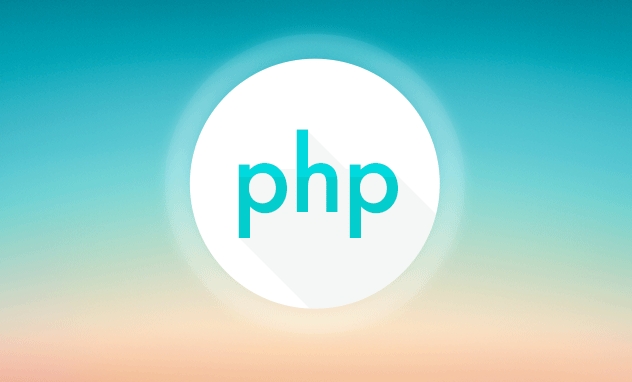 Backend Development
Backend Development
 PHP Tutorial
PHP Tutorial
 How do you prevent Cross-Site Request Forgery (CSRF) in php applications?
How do you prevent Cross-Site Request Forgery (CSRF) in php applications?
How do you prevent Cross-Site Request Forgery (CSRF) in php applications?
Jul 13, 2025 am 01:56 AMTo prevent CSRF attacks in PHP applications, you need to use anti-CSRF tokens, verify HTTP methods, set SameSite cookie attributes, and consider using a framework that automatically handles CSRF. 1. Use anti-CSRF token: the server generates a unique token and associates it with the user session, adds a hidden field to the form to submit the token, and verify whether the token matches when submitting; 2. Verify HTTP method: Ensure that sensitive operations are only performed through secure methods such as POST, and rejects unanticipated GET requests; 3. Set SameSite Cookie attribute: Configure SameSite=Strict or Lax through session_set_cookie_params to prevent cross-site requests from carrying cookies; 4. Use frameworks: such as Laravel, Symfony and other built-in CSRF protection mechanisms, automatically handle token generation and verification, improve security and reduce manual omissions.

Preventing Cross-Site Request Forgery (CSRF) in PHP applications is essential for securing user data and ensuring that actions taken in your app are intentional. The core idea is to verify that requests coming into your system were intentionally made by the authenticated user — not by a third party trying to exploit them.

Here's how you can effectively protect your PHP application from CSRF attacks.
Use Anti-CSRF Tokens
The most reliable method to prevent CSRF is by using anti-CSRF tokens (also known as synchronizer tokens). These are unique, unpredictable values generated by the server and associated with a user's session.

- When generating a form, include a hidden input field containing this token.
- On form submission, check if the submitted token matches the one stored in the session.
- If they don't match, reject the request.
For example:
// Generate token (if not already set)
if (empty($_SESSION['csrf_token'])) {
$_SESSION['csrf_token'] = bin2hex(random_bytes(50));
}
// In your form:
echo '<input type="hidden" name="csrf_token" value="' . $_SESSION['csrf_token'] . '">';
// On submission:
if (!hash_equals($_SESSION['csrf_token'], $_POST['csrf_token'])) {
die('Invalid CSRF token');
}This ensures that only forms generated by your application can be used to submit data.

Validate HTTP Methods Properly
Make sure that any state-changing operation (like POST, PUT, DELETE) isn't allowed via GET requests. Browsers automatically follow links or load images using GET, which makes them vulnerable to CSRF if sensitive actions are triggered through them.
For instance:
- Don't allow account deletion via
GET /delete-account. - Always use POST (or other appropriate methods) for such operations.
- Double-check the request method at the beginning of your scripts.
You can do something like:
if ($_SERVER['REQUEST_METHOD'] !== 'POST') {
http_response_code(405); // Method Not Allowed
exit('Only POST requests are allowed.');
}This helps avoid accidental or malicious triggering of destructive actions.
Set SameSite Cookie Attribute
Modern browsers support the SameSite attribute for cookies, which restricts how cookies are sent with cross-site requests. You can set it when starting a session:
session_set_cookie_params([
'lifetime' => 0,
'path' => '/',
'domain' => '', // adjust based on your domain
'secure' => true, // only send over HTTPS
'httponly' => true,
'samesite' => 'Strict' // or 'Lax' depending on your needs
]);
session_start(); Using SameSite=Strict means cookies won't be sent along with cross-site requests, greatly reducing the risk of CSRF.
Note: Be careful with browser compatibility if you need to support older clients.
Consider Using Frameworks That Handle CSRF Automatically
If you're building a larger PHP application, consider using a framework like Laravel, Symfony, or CodeIgniter. These frameworks have built-in CSRF protection mechanisms that handle token generation, validation, and more.
For example, Laravel automatically generates and validates CSRF tokens for all POST requests, and you just need to include @csrf in your Blade templates.
While rolling your own CSRF protection works fine for small apps, frameworks take care of edge cases and keep security practices up to date.
So there you go — use tokens, validate request methods, leverage cookie attributes, and consider using a solid framework. It's not rocket science, but it's easy to overlook a detail and leave your app exposed.
The above is the detailed content of How do you prevent Cross-Site Request Forgery (CSRF) in php applications?. For more information, please follow other related articles on the PHP Chinese website!

Hot AI Tools

Undress AI Tool
Undress images for free

Undresser.AI Undress
AI-powered app for creating realistic nude photos

AI Clothes Remover
Online AI tool for removing clothes from photos.

Clothoff.io
AI clothes remover

Video Face Swap
Swap faces in any video effortlessly with our completely free AI face swap tool!

Hot Article

Hot Tools

Notepad++7.3.1
Easy-to-use and free code editor

SublimeText3 Chinese version
Chinese version, very easy to use

Zend Studio 13.0.1
Powerful PHP integrated development environment

Dreamweaver CS6
Visual web development tools

SublimeText3 Mac version
God-level code editing software (SublimeText3)
 PHP Variable Scope Explained
Jul 17, 2025 am 04:16 AM
PHP Variable Scope Explained
Jul 17, 2025 am 04:16 AM
Common problems and solutions for PHP variable scope include: 1. The global variable cannot be accessed within the function, and it needs to be passed in using the global keyword or parameter; 2. The static variable is declared with static, and it is only initialized once and the value is maintained between multiple calls; 3. Hyperglobal variables such as $_GET and $_POST can be used directly in any scope, but you need to pay attention to safe filtering; 4. Anonymous functions need to introduce parent scope variables through the use keyword, and when modifying external variables, you need to pass a reference. Mastering these rules can help avoid errors and improve code stability.
 How to handle File Uploads securely in PHP?
Jul 08, 2025 am 02:37 AM
How to handle File Uploads securely in PHP?
Jul 08, 2025 am 02:37 AM
To safely handle PHP file uploads, you need to verify the source and type, control the file name and path, set server restrictions, and process media files twice. 1. Verify the upload source to prevent CSRF through token and detect the real MIME type through finfo_file using whitelist control; 2. Rename the file to a random string and determine the extension to store it in a non-Web directory according to the detection type; 3. PHP configuration limits the upload size and temporary directory Nginx/Apache prohibits access to the upload directory; 4. The GD library resaves the pictures to clear potential malicious data.
 Commenting Out Code in PHP
Jul 18, 2025 am 04:57 AM
Commenting Out Code in PHP
Jul 18, 2025 am 04:57 AM
There are three common methods for PHP comment code: 1. Use // or # to block one line of code, and it is recommended to use //; 2. Use /.../ to wrap code blocks with multiple lines, which cannot be nested but can be crossed; 3. Combination skills comments such as using /if(){}/ to control logic blocks, or to improve efficiency with editor shortcut keys, you should pay attention to closing symbols and avoid nesting when using them.
 How Do Generators Work in PHP?
Jul 11, 2025 am 03:12 AM
How Do Generators Work in PHP?
Jul 11, 2025 am 03:12 AM
AgeneratorinPHPisamemory-efficientwaytoiterateoverlargedatasetsbyyieldingvaluesoneatatimeinsteadofreturningthemallatonce.1.Generatorsusetheyieldkeywordtoproducevaluesondemand,reducingmemoryusage.2.Theyareusefulforhandlingbigloops,readinglargefiles,or
 Tips for Writing PHP Comments
Jul 18, 2025 am 04:51 AM
Tips for Writing PHP Comments
Jul 18, 2025 am 04:51 AM
The key to writing PHP comments is to clarify the purpose and specifications. Comments should explain "why" rather than "what was done", avoiding redundancy or too simplicity. 1. Use a unified format, such as docblock (/*/) for class and method descriptions to improve readability and tool compatibility; 2. Emphasize the reasons behind the logic, such as why JS jumps need to be output manually; 3. Add an overview description before complex code, describe the process in steps, and help understand the overall idea; 4. Use TODO and FIXME rationally to mark to-do items and problems to facilitate subsequent tracking and collaboration. Good annotations can reduce communication costs and improve code maintenance efficiency.
 Quick PHP Installation Tutorial
Jul 18, 2025 am 04:52 AM
Quick PHP Installation Tutorial
Jul 18, 2025 am 04:52 AM
ToinstallPHPquickly,useXAMPPonWindowsorHomebrewonmacOS.1.OnWindows,downloadandinstallXAMPP,selectcomponents,startApache,andplacefilesinhtdocs.2.Alternatively,manuallyinstallPHPfromphp.netandsetupaserverlikeApache.3.OnmacOS,installHomebrew,thenrun'bre
 How to access a character in a string by index in PHP
Jul 12, 2025 am 03:15 AM
How to access a character in a string by index in PHP
Jul 12, 2025 am 03:15 AM
In PHP, you can use square brackets or curly braces to obtain string specific index characters, but square brackets are recommended; the index starts from 0, and the access outside the range returns a null value and cannot be assigned a value; mb_substr is required to handle multi-byte characters. For example: $str="hello";echo$str[0]; output h; and Chinese characters such as mb_substr($str,1,1) need to obtain the correct result; in actual applications, the length of the string should be checked before looping, dynamic strings need to be verified for validity, and multilingual projects recommend using multi-byte security functions uniformly.
 Learning PHP: A Beginner's Guide
Jul 18, 2025 am 04:54 AM
Learning PHP: A Beginner's Guide
Jul 18, 2025 am 04:54 AM
TolearnPHPeffectively,startbysettingupalocalserverenvironmentusingtoolslikeXAMPPandacodeeditorlikeVSCode.1)InstallXAMPPforApache,MySQL,andPHP.2)Useacodeeditorforsyntaxsupport.3)TestyoursetupwithasimplePHPfile.Next,learnPHPbasicsincludingvariables,ech





